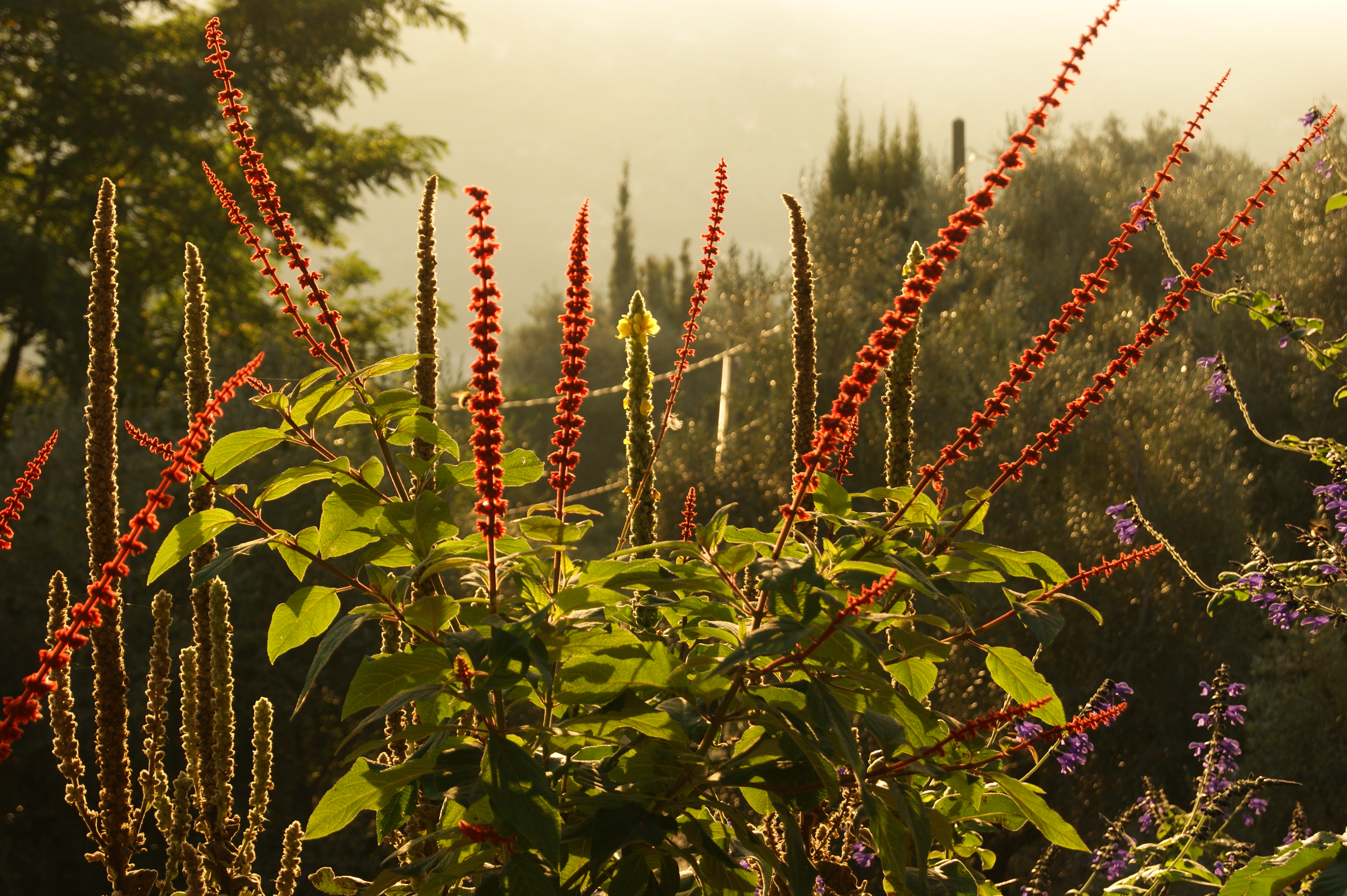Late October and an invite to La Mou. I jumped at the chance.
Peering excitedly through the plane window I still feel a great thrill in the first glimpse of the Mediterranean over the crumpled mountain ridges of central France. Sombre-looking forests and bare beige rocks give way to turquoise sea and the deep reddish glow of the sandstone of the massif de l'esterel. Colour replaces black and white – I can see why this special corner of France has held people’s affection for so long.
Dusk was falling and I approached the garden with some trepidation. How would it look? Would my ‘grand finale’ of experimental plantings have all failed, sizzled to a crisp in the relentless southern summer? I’d planted a lot in those last few months, hundreds upon hundreds of plants; many bought, many propagated by me. A lot of pride, as well as cash, was at stake.
As I crept out in the morning, lightly hungover from a very warm welcome, trepidation turned to delight on every corner. To an uninformed observer it must’ve looked as though I was having a very slow seizure, as I ooh-ed and aah-ed, bent over, stood back and generally gasped a lot.
 The fat leafy clumps of Echium pininana, thigh high when I left in March, had become three-metre monsters by my first visit in early June, towering over visitors and inviting comment from far and wide (right). Now at the other end of summer, the echiums were long gone but the tiny slips of Salvia confertiflora planted nearby greeted me at head height, waving their long wands of fuzzy red flowers invitingly in the breeze (below).
The fat leafy clumps of Echium pininana, thigh high when I left in March, had become three-metre monsters by my first visit in early June, towering over visitors and inviting comment from far and wide (right). Now at the other end of summer, the echiums were long gone but the tiny slips of Salvia confertiflora planted nearby greeted me at head height, waving their long wands of fuzzy red flowers invitingly in the breeze (below).
Curving steps of ancient and weathered railway sleepers lead up from the Arena, to two south-east facing terraces. On clear days mountain villages dozens of miles away appear from the haze in the river valleys that snake between La Mou and distant Nice. These terraces, long since abandoned save for a solitary olive tree, are the site of two experimental gardens. Un-irrigated, wild, woolly, "naturalistic" gardening, betting on their summer survival was the perhaps the biggest gardening gamble I'd ever taken. To be continued...



















